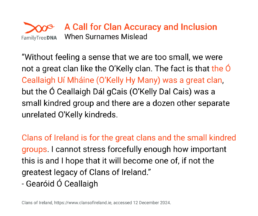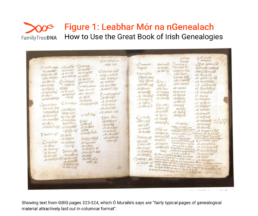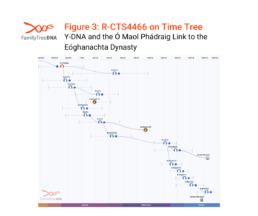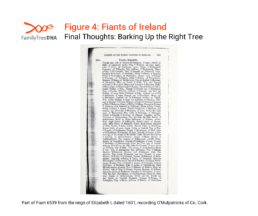By: Mike Fitzpatrick PhD and Esther Fitzpatrick PhD
Originally published in Journal of the Fitzpatrick Clan Society, “Gene-Ealogy and the new era of Irish surname, clan, and kindred research”
Using Y-DNA analysis, CASTs, and resources like the Great Book of Irish Genealogies, researchers are uncovering overlooked Irish clans and reframing long-held surname assumptions.
A recent FamilyTreeDNA blog, “Y-DNA Sheds New Light on the Medieval Genealogies of the Uí Briúin Dynasty of Northwest Ireland”, which stemmed from an article by DePew, Gleeson, and Jaski, is ground-breaking. The topic is familiar to those interested in Irish surnames, addressing the often-asked question, “Can Y-DNA be aligned with medieval Irish genealogies?”
Genetic and Traditional Surname Trees: Understanding DASTs vs. CASTs in Irish Genealogy
The approach the authors used to investigate the Uí Briúin is by no means new, involving a comparison of Y-DNA-associated surname trees with clan-associated surname trees – the neatly coined DASTs versus CASTs.
FamilyTreeDNA’s wonderful Big Y Block Tree, inspired by Alex Williamson, is a DAST, and many of FamilyTreeDNA’s surname Group Project Administrators publish their own DASTs. What constantly impresses is the attention to detail, the incorporation of both Y-SNP and Y-STR data, and the clever estimates of branch ages; as expected from scholars, DePew, Gleeson, and Jaski’s DASTs are all of that.
Why Genetic Evidence Needs Historical Context in Irish Surname Research
But, it is the cognizance of Irish surname complexities that takes their research to a higher level1. Not satisfied with tackling a single surname and trying to prove a point by linking it to the surnames of a few well-known patrilineal cousins, the authors took on a puzzle of dynastic proportions – literally. This is praiseworthy because CASTs that focus on only small circles of historically connected Irish surnames can be fraught since they may fail to recognise that it is not uncommon to find parallel surname connections among different Irish lineages, which further might be expected to have quite different Y-haplotypes.
When Surnames Mislead
As the authors say, “Sometimes the same surname arose independently in several branches.” This happens more often than imagined, yet may be obscured from sight. For example, the magnetism of a “big clan” surname and the allure of having a notable ancestor versus a less attractive “small clan” alternative can leave genetic genealogy hounds barking up the wrong tree. Such “dominant narratives” can greatly hinder or even utterly blind.
Challenging the Irish-American Genealogy Myth
Catherine Nash writes, “Diasporic genealogy is as much about enacting distinction as it is about making connections … the public culture of Irish-American genealogy is dominated by references to ancient Gaelic kings and clans.” DePew, Gleeson, and Jaski gain our applause for having none of that; with them, there is no cherry-picking. Yes, while on the one hand they identify Y-haplotypes that “match very well” some Uí Briúin lines, such as the Ó Conchabhair Donn (O’Connor Don), they found others “do not fit into any of the genealogical schemes”.
And the authors’ approach signals a new era has dawned on Irish surname, clan and kindred research, what we have elsewhere referred to in a recent publication as working the hyphen of “Gene-Ealogy” – and it’s a moment of celebration. The dominant narrative era, in which the big heroic and anti-heroic narratives popularised in some Irish history books and pedigrees, is passing, and we are entering a phase of much deeper scholarly interrogation and understanding of Irish clans and kindred groups and their surnames.
Now, some may squeal ‘revisionist’ and squirm at the upheaval and trauma that is being brought to bear on long-held surname identity beliefs. For others, revised positions are long overdue, part of a reversion to pre-colonial understandings of surnames, clans, and kindred. And while there needs to be sensitivity and respect for what has gone before, because some of it will remain accurate, there has come a deep desire to understand the occurrence of Y-DNA discovered Irish surname clusters that are possibly indicative of ‘lost’ clans and kindred groups.
A Call for Clan Accuracy and Inclusion
Finte na hÉireann (Clans of Ireland) is the independent permanent authority established to register Irish clans and historical families. Cathaoirleach (Chairperson), Gearóid Ó Ceallaigh, has recently emphasized the importance of accurate differentiation within Irish surname groups and that clans and kindred be identified with their correct names and associated ‘geographic areas in history’.
Further, he passionately stressed that Irish clans and kindred groups claim their identities:
So we come to, how, then, do we “do” robust research that explores the associations between Irish surnames and Y-haplotypes? The DAST bit looks very well covered, being in the good hands of Group Project Administrators, many so capable as mathematicians they could send their Irish clan flag attached to a can of Guinness up to the moon. The CAST bit is not easy, but we would do well to follow DePew, Gleeson, and Jaski.
Why O’Hart Remains Popular—But Problematic
When it comes to Irish genealogies, many CAST endeavours tend to default to John O’Hart’s “Irish pedigrees.” While DePew, Gleeson, and Jaski do make reference to O’Hart, it is with a degree of caution. They note that O’Hart’s pedigrees are included in their research because they are a frequently consulted online resource. O’Hart’s pedigrees currently hold sway in many circles, but relying on them for advanced genetic genealogy is akin to trusting poitín to power the motor of a Porsche 911.
Please pause for reflection. From the outset, reviewers received O’Hart generously, yet bluntly: “In a future edition we trust to find it quite up to modern notions of accuracy.” Present-day Irish surname expert John Grenham pulls no punches, “Every Gaelic Irish family is shown to descend from a single forebear, but only by constant jumbling of sources, unacknowledged guesswork and judicious omissions.” And Grenham’s final words on the topic are, “approach with caution.”
Why CAST Research Needs More Accurate Sources
And here lies the not easy aspect of DePew, Gleeson, and Jaski’s CAST method. We recognize that not only does one of the authors bring virtually unrivalled Irish genealogical scholarship, but the team also has access to sources many find out of reach. Yet, the difference between O’Hart and the other Irish genealogical sources that the trio references is so stark, as the following summary attests, that it becomes crucial for forward-looking genetic genealogists to get access to those sources. The strength of engaging with “Gene-Eaological” research, which draws on DAST methods coupled with robust archival research, will bring needed rigor to Irish clan, kindred, and surname research, hopefully leading the hounds to bark up the “right” tree.
How to Use the Great Book of Irish Genealogies (GBIG)
It is Leabhar Mór na nGenealach (Great Book of Irish Genealogies, hereafter GBIG) that serious researchers need to find a way to access. GBIG is not inaccessible, although only available in a few libraries and only purchasable at a price. However, for some context, one Big Y-700 costs about two-thirds of the beautiful shamrock green bound, five-volume set available from de Búrca books. Also, (affording some Irish wit) the online version, exemplified in Figure 1, is free to view.
Comparing O’Hart with GBIG is like comparing a skateboard with a spaceship. GBIG is the work of Dubhaltach Óg Mac Fhirbisigh (Duald Mac Firbis), a seventeenth-century Irish scribe, translator, and the “last great exponent” of Irish genealogies. While a nineteenth-century review of Mac Fhirbhisigh’s genealogies by Professor Eugene O’Curry was hyperbolic in its assessment – “perhaps the greatest genealogical collection in the world” – Eoin MacNeill (1921) realistically called it “by far the largest and fullest body of Irish genealogical lore.” A review of Ó Muraíle’s edition of GBIG declares it, alongside O’Donovan’s edition of the Annals of the Four Masters, one of the “two greatest works that any modern Irish scholars ever accomplished.”
GBIG’s Value in Uncovering Lost Lineages
What can GBIG bring? By way of example, DePew, Gleeson, and Jaski mention O’Connor clans. O’Hart gives us eight O’Connor pedigrees, much trimmed down, starting with “O’Connor (No. 1) Kings of Connacht”, which feeds the dominant narrative, and even those brilliant of mind can be seduced. In contrast to O’Hart, GBIG provides at least seventeen Conchabhair (Connor) surname genealogies across ten different population groups for a total of 375 individuals with the patronym. And that’s not to mention 300+ distinct occurrences of the given name Conchabhair, the fifth most numerous in GBIG, via which a patronym, perhaps scarcely recorded, had a chance to have arisen (refer Figure 2).
Insights into Surname Adoption and Fosterage
GBIG also brings perspectives to surname adoption, much in the way DePew, Gleeson, and Jaski highlight the factors that can influence “the precarious evolution of Irish surnames.” For example, in his genealogy of the seed or progeny of Conall Clogach, i.e., the folk of Maol Moichéirghe,”2 Mac Fhirbisigh noted, “perhaps someone would examine this since other texts generally say Conall Clogach, son of Aodh … the reader should understand that it is possible, and even a custom, to refer to a person’s fosterson as his son … and therefore one can, without contradicting this, call Conall Clogach “son of Aodh” … even though he be, according to this tract, Conall Clogach, son of Faolchú.”3 That is, Mac Fhirbisigh considered that the difference in Conall Clogach’s genealogies probably came about because he was fostered.
Other Key Genealogical Sources to Explore
Other easily accessible and essential yet largely underutilized genealogies deserve mention. Although unable to match GBIG, Corpus Genealogiarum Hiberniae (hereafter, CGH) contains “pre-Norman Irish and related tracts from the twelfth century;” those manuscripts are “Rawlinson B.502” and “The Book of Leinster,” “with variants and some additions from parallel material” in “The Book of Lecan” and the “Book of Ballymote.” CGH is available from the Dublin Institute for Advanced Studies and can also be accessed online, as can other vital works such as the Ó Cléirigh book of genealogies.
Correcting the Record: The Ó Maol Phádraig Lineage and the Fitzpatrick Surname
But the rewards of GBIG are by far the richest. Here, we recount some findings from the Fitzpatrick surname project. The dominant Fitzpatrick narrative once was that all surname bearers originated from the Mac Giolla Phádraig dynasts of Ossory, the most notable branch being the Barons of Upper Ossory, who were the first to take the anglicized surname form, by decree of Henry VIII. Hence, the early years of the Fitzpatrick surname Y-DNA Group Project saw the “collaborative aim” of preparing a “genealogical register of the male descendants of the 1st Baron of Upper Ossory in order to identify The Fitzpatrick, chief of his name.”
No second thought was given to other ways the Fitzpatrick surname may have arisen, yet it did in several different circumstances, Van Morrison-like, “from Bantry Bay up to Derry Quay and from Galway to Dublin town.” Finte na hÉireann now recognize five clans whose modern-day members all go by the surname Fitzpatrick:
- Mac Giolla Phádraig Dál gCais
- Mac Giolla Phádraig Laighean
- Mac Giolla Phádraig Ulaidh
- Fitzpatrick of Upper Ossory
- Ó Maol Phádraig Bréifne.
Clan Ó Maol Phádraig Bréifne (O’Mulpatrick of Breffny) is celebrated as an example of what Y-DNA can do when interrogated alongside GBIG, which then, hand-in-hand with Y-DNA, provides a springboard to other sources. The surname Ó Maol Phádraig, which arose from the given name Máel Pátraic, is now extinct, having succumbed to what MacLysaght called the “corruption” of Irish surnames, part of a colonial practice that served to weaken Gaelic Irish culture, history, and identity. Of the O’Mulpatrick, O’Hart said nothing – the dominant narrative probably held sway in his mind when he wrote that the Fitzpatrick of Bréifne was a clan originally of the Fitzpatrick of Ossory.
Although GBIG makes a record of just one Ó Maol Phádraig clan, of the Conmhaicne Fhinnir4, who came to have branches in Bréifne, this provides an important starting position for constructing CAST-DAST relationships for Bréifne Fitzpatricks. The Ó Maol Phádraig Bréifne DASTs versus CASTs are a work in progress, but there are indeed Y-DNA associations that match well with other Conmhaicne Fhinnir surnames, which, by the way, are not just the few that you might find listed on Wikipedia – GBIG reveals they number more than one hundred.
Y-DNA and the Ó Maol Phádraig Link to the Eóghanachta Dynasty
Crucially, GBIG also has twenty-four discreet occurrences of the precursor given name, Máel Pátraic. While “re-discovering” the Ó Maol Phádraig Bréifne was a defining moment for Fitzpatricks, the casting off of a dominant Fitzpatrick narrative opened the eyes to even more possibilities and the headspace to imagine and ask, “Were Ó Maol Phádraig clans, who were descendants of a Máel Pátraic individual, once more widespread?”
The answer came definitively, in GBIG-assisted fashion, via other sets of genealogical records that are the equivalent of unfathomable treasure hidden in plain sight – many thousands of Irish men and women, often named alongside close kin and clan associates, along with placenames and occupations, telephone book-like for those old enough to remember the White Pages; scarcely yet ever utilized, these records will also serve the new Irish surname research era well.
Connecting Ó Maol Phádraig to the Eóghanachta
GBIG provided a lead: the occurrence of Máel Pátraic among the Eóghanachta, a ruling dynasty of Munster. Y-DNA set the heart-racing a little faster – the existence of two sizeable groups of Fitzpatricks with the broad Eóghanachta Y-haplotype, R-CTS4466 (Figure 3), having surname-specific shared ancestry from the thirteenth-century, and deeper common ancestry with the great clan Ó Súilleabháin (O’Sullivan) et al.
Whence, there came the courage to tackle the Irish late-medieval “telephone books,” those being the Fiants of Ireland, where from the late-sixteenth to early-seventeenth centuries are recorded several ‘O Mullpatrick’ scattered among the pardons granted to Eóghanachta leadership, the most notable being Donal MacCarthy Reagh, 17th Prince of Carbery, and their associates (refer Figure 4). Moreover, the fiants record some Ó Maol Phádraig Eóghanachta were associated with a place that bore their patronym, Ballymulpatrick; that old townland name is now extinct, like the surname. To attach a modern Irish surname to a tuath is a big deal.
Final Thoughts: Barking Up the Right Tree
We consider there is a world of untouched data for those trying to make sense of Irish CASTs and DASTs, and the thrill of discovery awaits, yet there is a caveat – tread carefully. Consider what your discoveries might mean for both individual and clan identities. Indeed, could anything offset the discovery and resurrection of a “lost clan?” Well, what about putting to death an existing one? Eóghanachta Fitzpatricks have lived for the past three hundred years and more, going by their ‘corrupted’ surname. Their identity is bound to Fitzpatrick and whatever narratives, accurate or not, of how they adopted their surname.
To date, Co. Cork Fitzpatricks have reacted with lukewarm enthusiasm when learning they could descend from seventeenth-century Ó Maol Phádraig ‘rebels’, rather than Mac Giolla Phádraig nobility. And fair enough. Identity politics has traumatized Ireland for hundreds of years. How people are ascribed or choose to identify themselves is an ongoing struggle, especially in colonized spaces. Further, identities have economic and social consequences and impact individual and group wellbeing.
Indeed, some Fitzpatricks may wish the pages of GBIG were never opened. O’Hart attached the pedigree of the Fitzpatrick barons to the Mac Giolla Phádraig of Ossory and said their close kin were another Osraige clan, the O’Braonáin Uí Dhuach (O’Branan of Idough), the two said to share common ancestry at Cearbhall, King of Ossory (843-888 AD). A simplistic CAST-DAST comparison seems to bring confirmation to O’Hart, since many Fitzpatricks and many of Branan-like surnames (i.e., Brennan, Branham, etc.) share ancestry at R-FGC5494 … A1506, an interesting haplotype, which is dated to the medieval. Yet, GBIG places the O’Braonáin Uí Dhuach among the Uí Failghe, well detached from any Osraige line. Hence, GBIG’s disruption of a dominant narrative has led to an alternative, highly disruptive theory for the pre-twelfth century origins of R-A1506 Branans and Fitzpatricks.
It can be guaranteed there will be similar narrative twists for some who follow the lead of DePew, Gleeson, and Jaski, no longer satisfied with swimming on the surface and desirous of a plunge into GBIG and wherever that great book leads. That paper genealogy deeper dive is not unlike taking a Y-DNA test in the first place – and if you don’t want to be surprised by GBIG findings that might disrupt a dominant surname, clan, or kindred narrative, take care when you go looking.
Footnotes:
- 1 There are also unpublished examples, such as ‘Domnall son of Larien, son of Eochaidh Binneach and the Binnigh of the Bann’, by Edward Kane and Dwayne O’Neill, see https://www.familytreedna.com/groups/cenel-eoghainy-dnaproject/about/results
- 2 Anglicised Mulmohery, Moghery, and Early, a branch of the Cinéal Eóghain, i.e., the kindred or tribe of Eóghan (Owen), son of Niall Naoighhiallach, an Uí Néill branch originally centred at Ailech on Inis Eóghain (Inisowen, i.e., Eoghan’s Peninsula) in Dún na nGall (Donegal).
- 3 GBIG 146.5-6.
- 4 The Conmhaicne were said to be the descendants of the mythical demi-god, Conmhac who were spread across Connaught, as well as having an “east to west distribution … across the centre of Ireland”. See Byrne, F (1973). Irish Kings and High Kings. London: BT Batsford Ltd.
For citations of the original journal article, please use:
- Fitzpatrick, M and Fitzpatrick, E (2024). Gene-Ealogy and the new era of Irish surname, clan, and kindred research. The Journal of the Fitzpatrick Clan Society 5, 62-70. doi:10.48151/fitzpatrickclansociety02224, Ver1, 25 December 2024.
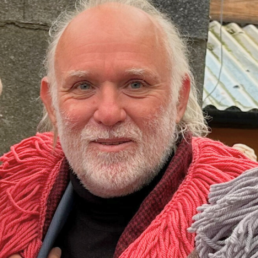
About the Authors
Mike Fitzpatrick, PhD
Independent Scholar, Group Project Administrator
Mike is a consultant scientist mostly in the fields of aquatic chemistry and toxicology, having formerly been a lecturer in chemistry at the University of Auckland.
Mike’s interest in genealogy and Irish history comes from his father, whose Irish family origins were lost in the famine era but rediscovered via Y-DNA. Mike has taken the learnings of his personal journey and helped many Fitzpatricks discover and extend the knowledge of their Irish roots, and his interest has grown to envelope all Irish surnames, clans, and kindred groups.
Mike is the administrator of the Fitzpatrick surname Group Project at FamilyTreeDNA, which serves to connect Fitzpatricks to their various clans and kindred groups within the surname era, as well as being a Y-DNA deeper origins project, which aims to uncover pre-surname ancestries and ancient clan connections. Mike is also an Executive Director of the Fitzpatrick Clan Society, editor of the Society journal, and a former director of Clans of Ireland.
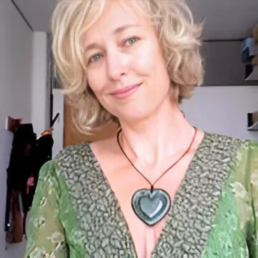
Esther Fitzpatrick, PhD
Faculty of Education at the University of Auckland
Esther is a Senior Lecturer in the School of Learning, Development and Professional Practice and Director of the Graduate Diploma in Teaching Primary at the University of Auckland. She is also Director of the Narrative and Metaphor Special Interest Network.
Esther is interested in issues of identity, bicultural practice and decolonising strategies (methods and pedagogy). Esther uses various critical innovative pedagogies, including writing as a method of inquiry, in her teaching and research. She has published on issues of racial-ethnic identity, Pākehā (white) identity, neoliberal impacts on academic identity, critical family history, critical autoethnography and arts-based methodologies.
Esther’s current research explores emerging identities in postcolonial societies, and ‘culturally responsive pedagogy’ in practice. Esther has recently published articles in:
- Genealogy
- The International Review of Qualitative Research
- The Routledge Companion to Decolonizing Art, Craft, and Visual Culture
- The Educational and Developmental Psychologist
She has also co-edited two books: Poetry, Method and Education Research: Doing Critical, Decolonising and Political Inquiry and Innovations in Narrative and Metaphor: Methodologies and Practices.
